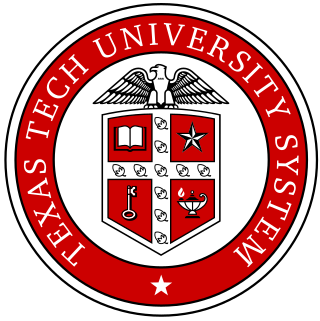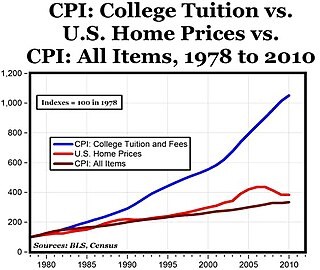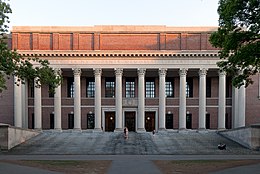
Grinnell College is a private liberal arts college in Grinnell, Iowa, United States. It was founded in 1846 when a group of New England Congregationalists established Iowa College. It has an open curriculum, which means students need not follow a prescribed list of classes. The college's 120-acre campus includes several listings on the National Register of Historic Places.

Berea College is a private liberal arts work college in Berea, Kentucky. Founded in 1855, Berea College was the first college in the Southern United States to be coeducational and racially integrated. It was integrated from as early as 1866 until 1904, and again after 1954.

The State University of New York is a system of public colleges and universities in the State of New York. It is one of the largest comprehensive systems of universities, colleges, and community colleges in the United States. Led by chancellor John B. King, the SUNY system has 91,182 employees, including 32,496 faculty members, and some 7,660 degree and certificate programs overall and a $13.37 billion budget. Its flagship universities are SUNY Stony Brook on Long Island in southeastern New York and the SUNY Buffalo in the west.
Tuition payments, usually known as tuition in American English and as tuition fees in Commonwealth English, are fees charged by education institutions for instruction or other services. Besides public spending, private spending via tuition payments are the largest revenue sources for education institutions in some countries. In most developed countries, especially countries in Scandinavia and Continental Europe, there are no or only nominal tuition fees for all forms of education, including university and other higher education.
A 529 plan, also called a Qualified Tuition Program, is a tax-advantaged investment vehicle in the United States designed to encourage saving for the future higher education expenses of a designated beneficiary. In 2017, K–12 public, private, and religious school tuition were included as qualified expenses for 529 plans along with post-secondary education costs after passage of the Tax Cuts and Jobs Act.

The University of Richmond is a private liberal arts college in Richmond, Virginia, United States. It is a primarily undergraduate, residential institution with approximately 3,900 undergraduate and graduate students in five schools: the School of Arts and Sciences; the E. Claiborne Robins School of Business; the Jepson School of Leadership Studies; the University of Richmond School of Law; and the School of Professional & Continuing Studies. It is classified among "Baccalaureate Colleges: Arts & Sciences Focus".

The Oklahoma State University System is a public university system in Oklahoma comprising five educational institutions: four general academic universities and one health sciences center. The system's flagship institution is Oklahoma State University–Stillwater. As of Fall 2023, the OSU System is the largest university system in the state of Oklahoma with a total enrollment of 34,455 students.
Capitol Technology University is a private university in South Laurel, Maryland, near Washington, DC. The university was founded in 1927 as the Capitol Radio Engineering Institute by a former US Navy Radioman. CREI changed its name to Capitol Institute of Technology in 1964, changed its name again to Capitol College in 1987, and assumed its present name in 2014. Capitol offers undergraduate and graduate programs specializing in engineering, computer science, information technology, and business. It is classified among "Special Focus Institutions—Schools of Engineering" and is a National Center of Academic Excellence in Information Assurance Education.

Principia College is a private liberal arts college in Elsah, Illinois. It was founded in 1912 by Mary Kimball Morgan with the purpose of "serving the Cause of Christian Science." "Although the College is not affiliated with the Christian Science Church, the practice of Christian Science is the cornerstone of campus life."

A financial endowment is a legal structure for managing, and in many cases indefinitely perpetuating, a pool of financial, real estate, or other investments for a specific purpose according to the will of its founders and donors. Endowments are often structured so that the inflation-adjusted principal or "corpus" value is kept intact, while a portion of the fund can be spent each year, utilizing a prudent spending policy.

A public university or public college is a university or college that is owned by the state or receives significant funding from a government. Whether a national university is considered public varies from one country to another, largely depending on the specific education landscape. In contrast a private university is usually owned and operated by a private corporation. Both types are often regulated, but to varying degrees, by the government.

The Medical College of Wisconsin (MCW) is a private medical school, pharmacy school, and graduate school of sciences in Milwaukee, Wisconsin. The school was established in 1893 and is the largest research center in eastern Wisconsin. It is associated with Froedtert Hospital as well as Children's Hospital of Wisconsin and houses the Center for Infectious Disease Research There are two additional campuses, one in Green Bay and one in Wausau.

In the United States, higher education is an optional stage of formal learning following secondary education. It is also referred to as post-secondary education, third-stage, third-level, or tertiary education. It covers stages 5 to 8 on the International ISCED 2011 scale. It is delivered at 3,931 Title IV degree-granting institutions, known as colleges or universities. These may be public or private universities, research universities, liberal arts colleges, community colleges, or for-profit colleges. U.S. higher education is loosely regulated by the government and by several third-party organizations.

The Texas Tech University System is a public university system in Texas with five member universities. Headquartered in Lubbock, Texas, the Texas Tech University System is a nearly $3 billion enterprise focused on advancing higher education, health care, research, and outreach with approximately 21,000 employees, more than 63,000 students, nearly 400,000 alumni and an endowment valued at $1.7 billion. In its short history, the TTU System has grown tremendously with 24 academic locations statewide and internationally.

College tuition in the United States is the cost of higher education collected by educational institutions in the United States, and paid by individuals. It does not include the tuition covered through general taxes or from other government funds, or that which is paid from university endowment funds or gifts. Tuition for college has increased as the value, quality, and quantity of education have increased. Many feel that increases in cost have not been accompanied by increases in quality, and that administrative costs are excessive. The value of a college education has become a topic of national debate in the U.S.

In the United States, student loans are a form of financial aid intended to help students access higher education. In 2018, 70 percent of higher education graduates had used loans to cover some or all of their expenses. With notable exceptions, student loans must be repaid, in contrast to other forms of financial aid such as scholarships, which are not repaid, and grants, which rarely have to be repaid. Student loans may be discharged through bankruptcy, but this is difficult. Research shows that access to student loans increases credit-constrained students' degree completion, later-life earnings, and student loan repayment while having no impact on overall debt.
The American Opportunity Tax Credit is a partially refundable tax credit first detailed in Section 1004 of the American Recovery and Reinvestment Act of 2009.

The higher education bubble in the United States is the possibility that excessive investment in higher education could have negative repercussions in the broader economy. Although college tuition payments are rising, the supply of college graduates in many fields of study is exceeding the demand for their skills, which aggravates graduate unemployment and underemployment while increasing the burden of student loan defaults on financial institutions and taxpayers. Moreover, the higher education bubble might be even more serious than load of student debts. Without safeguards in place for funding and loans, the government risks creating a moral hazard in which schools charge students expensive tuition fees without offering them marketable skills in return. The claim has generally been used to justify cuts to public higher education spending, tax cuts, or a shift of government spending towards law enforcement and national security. There is a further concern that having an excess supply of college graduates exacerbates political instability, historically linked to having a bulge in the number of young degree holders.

The Student and Family Tax Simplification Act is a bill that would amend the Internal Revenue Code to consolidate several different education tax incentives into an expanded American Opportunity Tax Credit. The American Opportunity Tax Credit, under this legislation, would provide a maximum credit of $2,500.
The Yale University endowment is the world's third-largest university endowment and has a reputation as one of the best-performing investment portfolios in American higher education. The endowment was established at Yale University, then Yale College, in 1718 from an initial fund of £562 provided by Elihu Yale and has grown to more than $40 billion in value over the ensuing 300 years. It is managed by the Yale Investments Office.


















